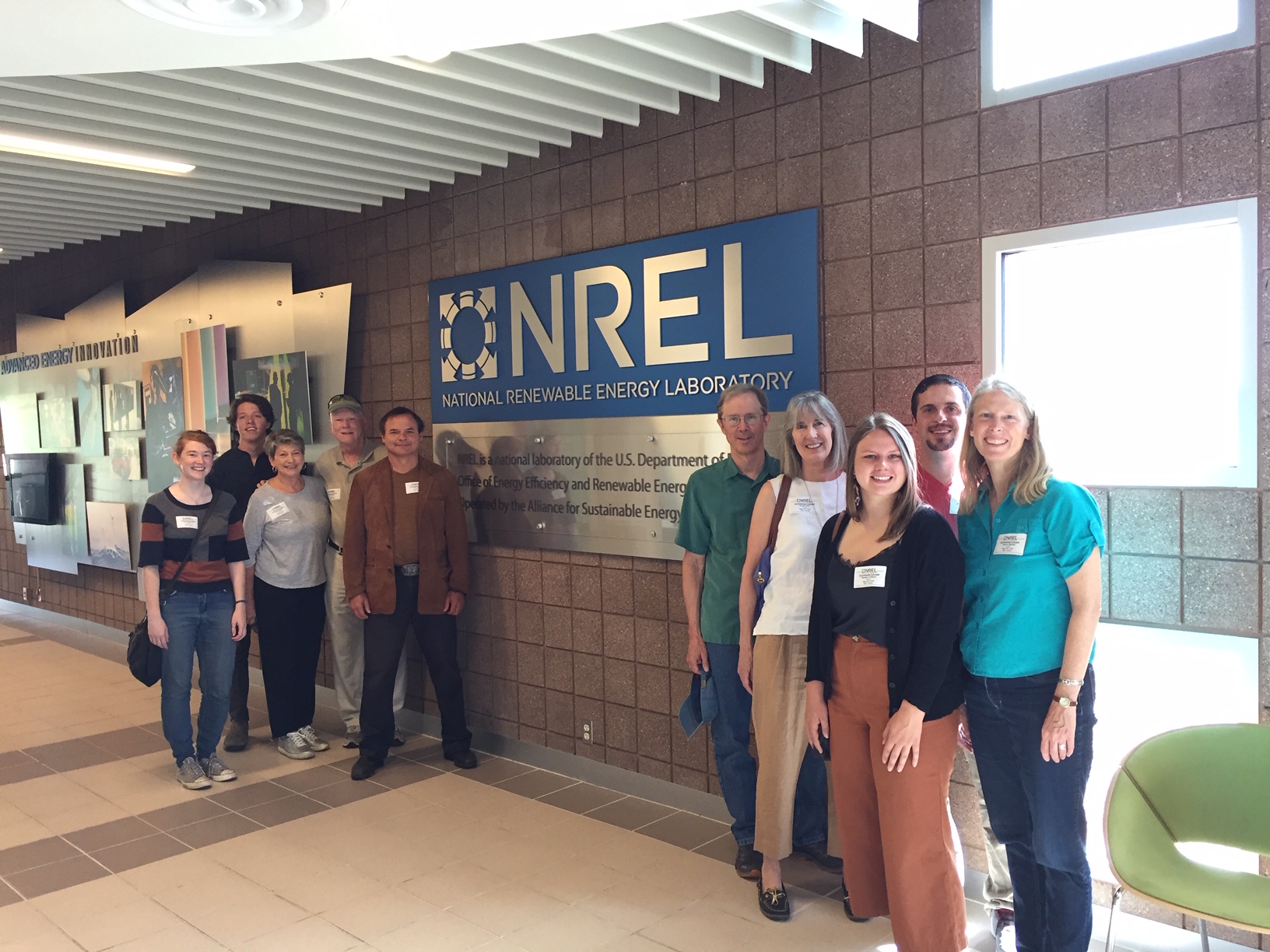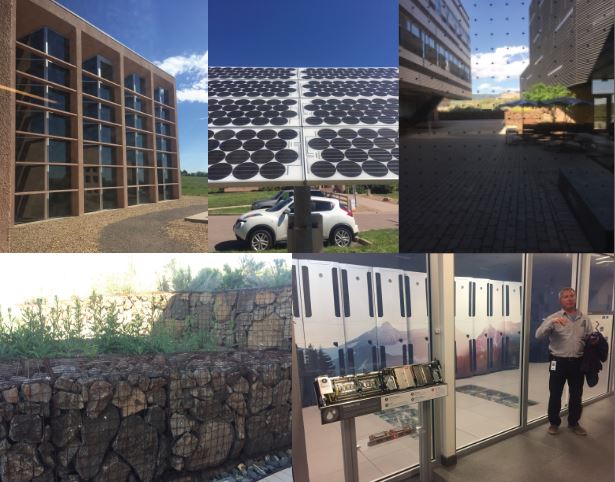“You’ll leave full of hope”: My tour of the National Renewable Energy Lab
A couple weeks ago, my coworker Jeanne invited me to join a tour of the National Renewable Energy Lab in Golden, Colo. “Trust me, you want to tag along,” Jeanne said. “You’ll leave full of hope.”
Colorado lab offers a window into the technology of a renewable energy future

A couple weeks ago, my coworker Jeanne invited me to join a tour of the National Renewable Energy Lab (NREL) in Golden, Colo. “Trust me, you want to tag along,” Jeanne said. “You’ll leave full of hope.”
At 8:45am the next day, I pulled into the parking lot outside of NREL’s education center, ready to be hopeful.
NREL is a Department of Energy-funded facility nestled in the golden brown hills just west of Denver. They chose that location when it was established in 1974 because of the high elevation. Being closer to the sun means more UV exposure and more intense sunlight — prime real estate for solar panels. Since then, NREL has been leading research efforts on renewable energy and energy efficiency, fueling the clean energy movement with groundbreaking technology.
I work on renewable energy policy campaigns, advocating for policies that will implement the kind of clean energy research that goes on in NREL. But until that foggy Friday morning, I had never actually seen that technology up close.
It’s one thing to hear the numbers showing us that over the last decade, solar power capacity grew 39-fold and wind power capacity grew five times over in the United States. Or hear the fact that during the same period, the country’s battery storage capacity increased by 666 MW and 395,270 new electric vehicles took to the road. And, most recently, that renewables have now surpassed coal in total energy capacity, for the first time ever.
But it’s another thing to see firsthand the technology that’s making it all possible. The tour took us through labs where researchers and scientists are working on increasing our battery storage capacity to levels that might have seemed impossible just a few years ago. They’re making solar panels more efficient than they’ve ever been and rethinking the way we can connect them to our grid. Some of the most energy efficient smart computers in the world help them simulate what a sustainable clean-energy society would look like in practice. Electric transportation, geothermal, grid modernization, hydrogen… there wasn’t nearly enough time in our two-hour tour to go through it all.
Jeanne was right. I did leave hopeful. But it wasn’t peering down into the labs and watching men and women in lab coats building tomorrow’s renewable energy technologies that had the biggest impact on me.
It was the facilities themselves.
NREL isn’t just researching these incredible technologies — it’s implementing them. Every inch has been created thoughtfully, creatively and sustainably. The floors and wood panel walls are made of recycled materials. The lightbulbs are LEDs. The windows slant to let in light and heat in more efficient ways. This means that energy-draining heating and cooling systems are barely needed. Gabion walls use on-site materials to conserve energy, protect water runoff and provide habitat space for critters. The windows are bird-friendly. And solar panels glimmer on every rooftop.
I left hopeful not only because I saw that this sustainable technology exists, but because I also realized how effectively and elegantly it can be integrated into the way we live. Just imagine if we put these technologies to use in communities across the country.
Our society is ready to be powered by clean renewable energy and built in a way that incorporates our environment rather than destroys it. But to get there, it will take strong policies and bold commitments to 100 percent renewable energy — the kinds of commitments we’ve already seen businesses, communities and entire states ramping up. Most recently, New York joined passed a bold 100% clean energy bill through the legislature. With the governor’s signature, the Empire state will join the ranks of Hawaii, California, New Mexico, and Washington. We can and must see even more states doing the same.
I left NREL hopeful because the technology is here. And I’ll keep doing this work because I know we must take the next step — which means using the type of knowhow at NREL everywhere.

Pictures from my tour of NREL
Top: (left) recessing glass windows to make light and heat more energy efficient within the building; (middle) solar panels on campus; (right) bird-friendly glass with spots to prevent birds from running into it.
Bottom: (left) Gabion walls made from on-site materials; (right) an energy-efficient super computer to help NREL simulate clean energy societies.


